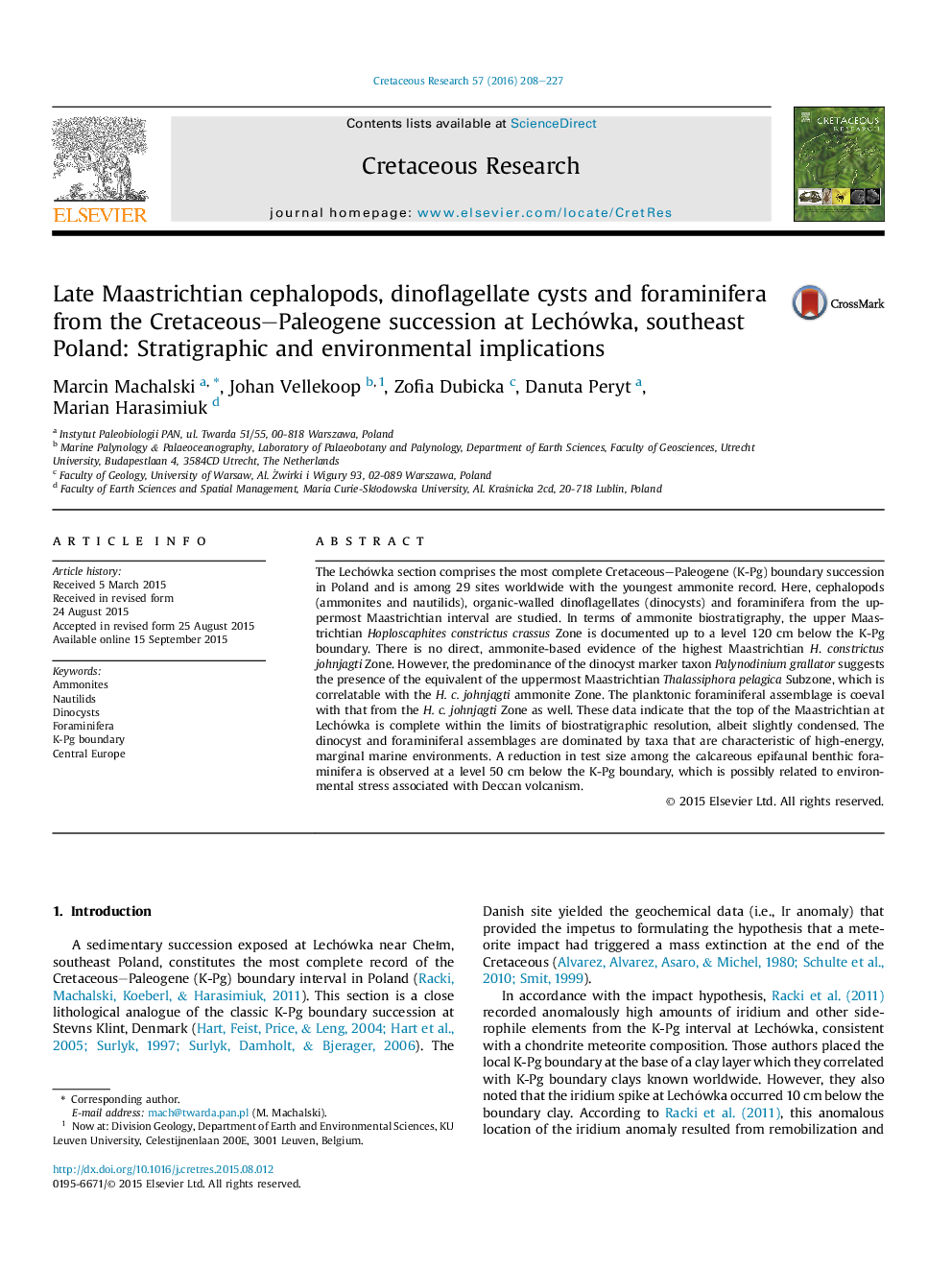| Article ID | Journal | Published Year | Pages | File Type |
|---|---|---|---|---|
| 4746845 | Cretaceous Research | 2016 | 20 Pages |
•Lechówka section comprises the most complete K-Pg boundary interval in Poland.•Upper Maastrichtian cephalopods, dinoflagellates and foraminifera from Lechówka are studied.•Stratigraphic and environmental significance of these groups is discussed.
The Lechówka section comprises the most complete Cretaceous–Paleogene (K-Pg) boundary succession in Poland and is among 29 sites worldwide with the youngest ammonite record. Here, cephalopods (ammonites and nautilids), organic-walled dinoflagellates (dinocysts) and foraminifera from the uppermost Maastrichtian interval are studied. In terms of ammonite biostratigraphy, the upper Maastrichtian Hoploscaphites constrictus crassus Zone is documented up to a level 120 cm below the K-Pg boundary. There is no direct, ammonite-based evidence of the highest Maastrichtian H. constrictus johnjagti Zone. However, the predominance of the dinocyst marker taxon Palynodinium grallator suggests the presence of the equivalent of the uppermost Maastrichtian Thalassiphora pelagica Subzone, which is correlatable with the H. c. johnjagti ammonite Zone. The planktonic foraminiferal assemblage is coeval with that from the H. c. johnjagti Zone as well. These data indicate that the top of the Maastrichtian at Lechówka is complete within the limits of biostratigraphic resolution, albeit slightly condensed. The dinocyst and foraminiferal assemblages are dominated by taxa that are characteristic of high-energy, marginal marine environments. A reduction in test size among the calcareous epifaunal benthic foraminifera is observed at a level 50 cm below the K-Pg boundary, which is possibly related to environmental stress associated with Deccan volcanism.
Graphical abstractFigure optionsDownload full-size imageDownload as PowerPoint slide
